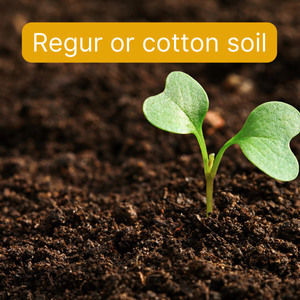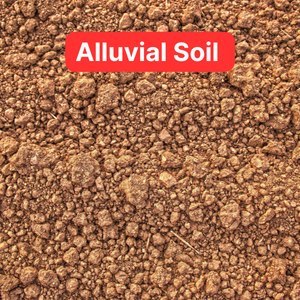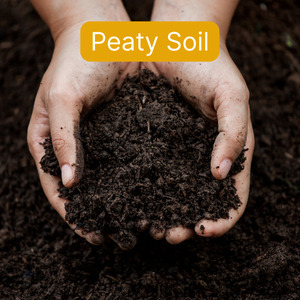#Gomutra
Explore tagged Tumblr posts
Text
Gir Cow Ghee at Goseva

Gir Cow Ghee at Goseva is crafted using traditional methods from the pure, nutrient-rich milk of indigenous Gir cows. Known for its rich flavor and golden hue, this ghee is a natural powerhouse packed with health benefits. Whether used in cooking or as part of your daily routine, it brings a wholesome touch to every dish. At Goseva, we ensure the highest quality, giving you the authentic essence of desi cow ghee with its nourishing properties and unique taste that support both body and mind.
For Shop Click Here: @ https://www.gomataseva.org/product/a2-gir-cow-ghee/
#a2ghee#a2cowghee#a2gircowghee#girgaughee#cowghee#bilonaghee#panchgavyaproducts#panchagavyaproducts#kamdevghrita#Gomutra#Gomutraark
0 notes
Note
Big words from people who support genocide and think drinking piss is okay 💀
help the hamas supporters found me again whatever shall I do
get your head out of your ass anon
#this really is the piss on the poor website#because i dont drink gomutra????#big words from someone who supports hamas and obviously has no reading comprehension#anon asks#answered#hate mail
27 notes
·
View notes
Text

Why Choose Ayurvedic Treatment for Blood Cancer?
Holistic Approach: Unlike conventional treatments that target only the cancer cells, Ayurveda aims to heal the whole body. Our natural remedies help balance the body's doshas, improve blood circulation, and enhance the body’s ability to heal itself.
Natural Ingredients: The Ayurvedic remedies we provide at Cow Urine are derived from natural ingredients, including herbs like ashwagandha, turmeric, and cow urine therapy. These ingredients are known for their anti-inflammatory, detoxifying, and immunity-boosting properties.
Personalised Care: Every individual is unique, and so is their treatment plan. At Cow Urine, we assess your dosha (body constitution) and tailor the Ayurvedic treatment specifically for you. This personalised approach ensures that your body gets the right balance of herbs and therapies needed for recovery.
Fewer Side Effects: One of the most significant advantages of Ayurvedic treatment is the reduced risk of side effects. Unlike chemotherapy and radiation, which can severely weaken the body, our treatments are gentle, natural, and aimed at nourishing the body rather than depleting it.
How Our Ayurvedic Treatment Works
Our Ayurvedic treatment for blood cancer focuses on purifying the blood, strengthening the immune system, and improving overall health. We use a combination of herbal treatments, dietary recommendations, and lifestyle changes that work synergistically to support the body's fight against cancer.
Herbal Remedies: Potent herbs like ashwagandha and neem are used to enhance immunity and detoxify the blood.
Cow Urine Therapy: Cow urine, a key component in Ayurveda, is believed to have powerful healing properties that help in detoxification and rejuvenation.
Dietary Guidance: A balanced diet plays a crucial role in the healing process. We provide tailored dietary plans to improve digestion and strengthen the body’s natural defenses.
Lifestyle Changes: Practices like meditation and yoga are incorporated to reduce stress and enhance mental and emotional well-being, which is essential in battling any illness.
0 notes
Text
Pure Essence of Jaipur: Sunrise A2 Milk's Cow Goumutra
Experience the authentic taste of Jaipur with Sunrise A2 Milk's Cow Goumutra, a traditional elixir crafted from the purest cow's urine. Sourced from ethically treated cows, this sacred beverage is rich in cultural significance and believed to offer various health benefits. Immerse yourself in the cultural heritage of Jaipur while savoring this unique elixir from Sunrise A2 Milk. Elevate your well-being and embrace tradition with every sip. Try it today!
Indulge in the heritage, order your Cow Goumutra from Sunrise A2 Milk now!
0 notes
Text
Gulabpash 2104
As a vessel of tradition and a keeper of ceremonies, the gulabpash had always been more than just an object; by the year 2104 it had transformed into something quite different from what it had been. It started out years ago as a modest gomutra, or fragile container of rose water, used in Indian homes to bless individuals and purify environments. It was a delicately fashioned piece of copper or silver that was handled by human hands to purify the soul and the air. Sprinkling water was considered a spiritual act in those days, with the idea that it might purify the air and realign energy.
The gulabpash found itself changing along with society and the complexity of the planet. An era of technology and relentless speed had replaced the world it had known, which was one of peaceful homes, leisurely rituals, and tight-knit communities. By the time the gulabpash was originally conceived, cleansing had to address far more than only the spiritual or physical aspects of the world. Cities had gotten denser, higher, and dirtier. People's lives were no longer limited to the physical places they lived; instead, they were extended into digital realms where streams of information, light, and sound constantly overstimulated the mind.
New types of gulabpash emerged during this period. The object's ability to adjust to the world's changing needs was acknowledged by engineers and designers in the middle of the twenty-first century. What started out as a straightforward vessel evolved into a technological wonder, keeping the simplicity of its design while evolving into an advanced, multifunctional tool. The new gulabpash had bio-sensors that could sense the quality of the air, the emotional and mental energy of the surroundings, and even the increasing amounts of digital noise that were interfering with people's life.
Now, the gulabpash could float on its own, a silent defender of areas, moving across rooms like a soft wind. It has AI-powered algorithms built into it that took in data gathered from those around it and changed its behavior to suit their requirements. It would release a mist whenever someone was nervous or tense, but this time the mist was made of nanoparticles that were meant to cleanse the user's thoughts as well as the air, not just rose water. It could detect and molecularly neutralise pollutants, allergies, and poisons in the air. More than that, though, it was able to identify digital clutter—the unseen frequencies of overstimulation brought on by continual connectivity—and release particles that relieved the noise by calming the brain interactions.
In a time of turmoil, the mist it spread was a healing energy rather than merely a relic from earlier ceremonies. Now, the gulabpash contained essences that could be customized for the occasion—rose, of course, but also molecular components that functioned at a biological level, assisting in the release of tension, the facilitation of breathing, and the restoration of balance. It was more than simply a household cleaner; it was a tool for mental and emotional detoxification, bringing the body and mind into harmony in ways that ancient rituals had always intended but that were now made possible by modern technology.
The gulabpash was more than an observer on its journey from house to house. It had an enormous impact on the areas it invaded. It coordinated with the core AI of future smart houses to identify changes in temperature, emotional states, and air quality. When a family sat down to eat, the gulabpash would approach and release mists that grounded the family's energies and refreshed the air. It would detect increases in cortisol levels during stressful circumstances and react by releasing calming essences that complemented brain wave modulations and blended in perfectly with the mist. Its mild yet revolutionary presence acted as a balance agent.
Gulabpash became even more vital in times of crises in this futuristic world. When towns experienced environmental disasters, gulabpash drone fleets were used to sterilize diseased areas or purge the air of harmful gases. Silently and constantly, these gadgets spread their mists across city blocks, cleaning and restoring areas that had been contaminated by human activity. Once a household personal item, the gulabpash has evolved into widespread survival gear. It was a cleansing force that was able to adapt to any size of demand, not only for the home but for large cities.
However, the gulabpash's cultural importance persisted despite its transformation into a high-tech marvel. As it has done for ages, it performed its function during ceremonial gatherings, blessing both people and places. Gulabpash floats gently among the guests at weddings, funerals, and community ceremonies, dispersing bio-remedies that are both symbolic and practical, together with sacred mists of rose water. The traditional notion that sprinkling essence into the air might purify rooms, realign energy, and bring people closer was still upheld by these rites, despite their modernization over the years.
In its most recent iteration, the gulabpash served as a tool for introspection as well. It might have intimate interactions with users through AI-driven customisation. It would detect when someone was resting, meditating, or thinking, and modify its mists accordingly. Some people found it to be a trustworthy friend that helped them cleanse both their internal and external environments. People depended on it to help them focus, relax, and re-establish a connection with themselves during times of introspection since it coordinated with their breathing.
The gulabpash had changed to meet the difficulties of a world that was constantly shifting always changing. By combining traditional knowledge with modern technology, it was no longer merely a tool of the past but rather an essential component of the future. It had endured for centuries because, despite significant changes in the manner in which it produced those outcomes, its goal—the need for purification, renewal, and peace—had remained constant.
The gulabpash continued to be a sign of continuity as it drifted gently through a house in the twenty-first century. It served as a link between the old and the modern and a reminder that certain standards never changed, regardless of how developed society got. Gulabpash's straightforward function of cleansing spaces—whether with rose water, nano-mists, or bio-sensors—was as crucial as ever in this future, when the air was dense with digital frequencies and the mind was constantly overwhelmed. It was no longer only a device for sprinkling liquid; it was now a protector of equilibrium, a silent, omnipresent force that purified not only the air but also the entire significance of coexisting peacefully with the environment.
2 notes
·
View notes
Text
Discover Gomutra Ke Fayde - Goseva
Discover the Gomutra Ke Fayde with Goseva’s pure Gomutra, a natural remedy with detoxifying and immune-enhancing properties. It promotes digestion, purifies the body, and supports overall health. Our Gomutra is completely chemical-free, ensuring a safe and effective solution for wellness. Order now and harness the natural power of Gomutra for better health and vitality.

0 notes
Text
'Left liberals impose on tradition...': Sridhar Vembu hits back at Gomutra row after 'Boomer' jibe
Zoho co-founder Sridhar Vembu reignited the debate on India's traditional knowledge systems, saying that dismissing them outright reflects arrogance, not scientific rigor. Taking a note on social media, Vembu said, “The left-liberal crowd in our country likes to dump on India's traditional knowledge systems, substituting slogans like 'trust science' for critical thinking.” He called for humility…
0 notes
Text
'Left liberals impose on tradition...': Sridhar Vembu hits back at Gomutra row after 'Boomer' jibe
Zoho co-founder Sridhar Vembu reignited the debate on India's traditional knowledge systems, saying that dismissing them outright reflects arrogance, not scientific rigor. Taking a note on social media, Vembu said, “The left-liberal crowd in our country likes to dump on India's traditional knowledge systems, substituting slogans like 'trust science' for critical thinking.” He called for humility…
0 notes
Link
0 notes
Text
Know Your Soil: Fertilization Tips for Every Soil Type
India is a country with a rich farming tradition. Here, we have many types of soil that help grow different crops. By using the right farming methods and natural (jaivik) fertilizers for each soil type, farmers can grow more crops and keep the soil healthy for many years. This way, farming becomes better, and the land stays good for future generations.
So how can you improve fertility to your farm soil?
Let’s see nature of soil and its fertilization tips:
Black soil or Regur or cotton soil

Black soils are characterised by a thick, dark-coloured soil and it is rich in humus. Black soils are extremely fertile and can produce high agricultural yields due to their elevated moisture storage capacity. Black soils are rich in iron, lime, calcium, potassium, aluminum and magnesium.
Crops: Cotton, Jowar, Wheat, Groundnut,Tobacco.
Deficiency: Nitrogen, Phosphorus, Organic matter.
Tips to fertilise black soil
Avoid Over-Watering: Black soil retains moisture well; over-irrigation can lead to waterlogging.
Crop-Specific Fertilization: Tailor fertilizer applications to the specific nutrient needs of crops like cotton, soybeans, or cereals.
pH Management: If soil pH exceeds 8, Use organic materials like mulch, pine needles, sphagnum peat moss, compost, and coffee grounds. For lower alkalinity.
Farmyard Manure (FYM): Enriches organic matter and microbial activity.
Vermicompost: Improves soil structure and nutrient availability.
Green Manure Crops: Legumes like gomutra or sun hemp fix nitrogen and improve organic content.
Compost:Homemade or commercial compost provides a balanced nutrient supply.
Read More:Vermicomposting
Red soil and Yellow soil

Red soil is rich in iron oxide, giving it a characteristic reddish color. When red soil is fully hydrated it becomes yellow in colour. It has a sandy to loamy texture, good drainage, and low natural fertility. Its pH value varies from 4 to 8.
Crops: Wheat, Pulses, Millets, Potatoes, Vegetables. Deficiency: Limited organic matter and low nitrogen, phosphorus, humus and potassium levels. Proper fertilization can greatly enhance its productivity.
Tips to fertilise Red soil?
Erosion Control: Use contour farming, mulching, or terracing to prevent topsoil loss.
Moisture Management: Use cow dung to retain moisture, as red soil drains quickly.
pH Balance: If the soil is highly acidic, apply lime to neutralize acidity.
Farmyard Manure (FYM): Add 8–10 tons/acre to improve organic matter.
Vermicompost: Improves soil texture and adds slow-releasing nutrients.
Green Manuring: Leguminous crops like gomutra or dhaincha (one type of plant)fix nitrogen and enrich the soil.
Alluvial soil

Alluvial soil is fertile soil deposited by rivers, making it one of the most agriculturally productive soils. It is found extensively in river basins and plains. Alluvial soils are suitable for agriculture because they are rich in minerals like potash, phosphoric acid, and lime. Crops: Rice, Wheat, Sugarcane, Tobacco, Maize, Cotton, Soybean, Jute, Oilseeds, Fruits and vegetables.
Deficiency: Nitrogen, Humus, and Organic matter
Tips to fertilise Alluvial soil?
Crop Rotation: Alternate between nitrogen-depleting crops (e.g., rice) and nitrogen-fixing crops (e.g., legumes).
Erosion Control: Prevent soil erosion by planting cover crops or using mulching techniques.
Irrigation Management: Leverage the soil’s good water retention but avoid overwatering sandy areas.
Soil Testing: Perform regular soil tests to ensure appropriate fertilization based on nutrient levels.
Fish meal: Rich in nitrogen, phosphorus, and trace elements like calcium, magnesium, and iron.apply 100–150 kg per acre, especially for crops like vegetables, rice, and oilseeds.
Cow Dung and Cow Urine: Cow dung provides a balanced mix of nutrients and organic matter.Cow urine acts as a natural growth stimulant, improving soil fertility and pest resistance.
Desert soil or arid soil

Desert soil is found in arid and semi-arid regions where rainfall is minimal. It has unique characteristics that limit its fertility, but with proper management, it can support specific vegetation types and even agriculture.It also has high levels of calcium carbonate and phosphate.
Crops: Barjara, Jowar, Lentils, Dates, Figs, Oilseeds.
Deficiency: Low moisture, nitrogen, organic matter and other elements like Mg, k, Fe etc.
Tips to fertilise Desert soil?
Rain water harvesting: Store rainwater to irrigate and supplement soil moisture.
Drip Fertigation: Apply water-soluble fertilizers through drip irrigation to reduce wastage and improve nutrient uptake.
Mulching: Cover soil with organic mulch (Organic residues like date palm leaves or other desert vegetation) to conserve moisture, reduce evaporation, and improve nutrient availability.
Crop rotation: Alternate cereal crops with legumes to improve nitrogen content.
Agroforestry: Plant drought-tolerant trees (e.g., Prosopis, Acacia) to enhance soil fertility and reduce erosion.
Soil testing: Conduct soil analysis to identify deficiencies and tailor fertilization accordingly.
Animal-Based Fertilizers: Camel dung, sheep manure, or goat manure (locally available in desert regions).
Peaty soil

Peaty soil is a type of soil that contains a high percentage of organic matter and is typically found in waterlogged and marshy areas. It is dark in color, soft, and spongy due to the accumulation of decomposed plant material over time.
Crops: Rice, Oats, Peas, Lentils, Grams (chickpeas), Soybeans, Barriers.
Deficiency: Potassium, Micronutrient, Magnesium, Calcium, Nitrogen.
Tips to fertilise Peaty soil?
Lime application: Use lime to neutralize acidity and improve pH.
Crop selection: Grow acidic tolerant crops like tea, barriers and root vegetables or crops that thrive in wet conditions, such as paddy rice.
Wood ash: Supplies potassium and reduces acidity.
Bio-fertilizer: Use nitrogen-fixing bacteria(e.g., Rhizobium) and phosphate-solubilizing bacteria to enhance nutrient availability. you can also use Advance jivamrut.
Conclusion
Soil is a living system like any other organism cell develops and undergoes degradation. Soil degradation happens due to soil erosion. If treated in time, it can be saved from degradation and harvested again. choose right fertilization to improve your soil quality. In this blog we can apply tips and make soil fertile.
0 notes
Text
Pure A2 Ghee Bilona Method at Goseva

At Goseva, our Pure A2 Ghee is crafted using the traditional Bilona method, where the curd made from A2 milk of Gir cows is hand-churned to extract butter, which is then slowly simmered to create nutrient-rich ghee. This meticulous process ensures that the ghee retains its rich aroma, golden hue, and exceptional health benefits. Ideal for boosting immunity, improving digestion, and promoting overall wellness, our A2 Ghee is a perfect addition to your kitchen for a healthy and flavorful lifestyle.
Visit Now: @ https://www.gomataseva.org/product/a2-gir-cow-ghee/
#a2ghee#a2cowghee#a2gircowghee#girgaughee#cowghee#bilonaghee#panchgavyaproducts#panchagavyaproducts#kamdevghrita#Gomutra#Gomutraark
0 notes
Text

Difference Between Desi and Exotic Foreign Breed Cows
Understanding the differences between Desi cows (native Indian breeds) and exotic foreign breed cows is essential for recognizing their unique characteristics, benefits, and roles in agriculture, health, and culture. Here, we explore various aspects of these cows to highlight the distinctions.
Outer Look and Sound
Desi Cows: Desi cows have a distinctive hump on their back, with a hanging and feathery neck. They produce sounds that resemble “OM” and “Amba,” names often associated with the divine.
Foreign Cows: Foreign breed cows have a flat back without a hump and lack the hanging, feathery neck. Their sounds are described as bitter and lack the perceived sacred resonance of Desi cows.
Milk Quality
Desi Cows: The milk from Desi cows is classified as A2, which is considered healthy and beneficial. It is linked to numerous health benefits and is an integral part of traditional Ayurvedic medicine.
Foreign Cows: The milk from foreign cows falls under the A1 category, which is believed to be unhealthy and associated with various diseases, including cancer.
Gobar (Dung) and Gaumutra (Urine)
Desi Cows: The dung and urine of Desi cows have a variety of uses and exceptional medicinal properties. They are used in agriculture as natural fertilizers and pesticides and are valued in traditional medicine.
Foreign Cows: The excreta of foreign cows are seen as ordinary and potentially poisonous, lacking the medicinal and agricultural benefits of Desi cow dung and urine.
Emotional Characteristics
Desi Cows: Desi cows exhibit strong emotional bonds. If a calf dies, the cow may stop producing milk and refuse to eat or drink, demonstrating deep emotions. It is believed that consuming Desi cow milk fosters loyalty, duty, and respect towards elders and teachers.
Foreign Cows: Foreign cows are perceived as emotionless. They continue to produce milk even if their calf dies, indicating a lack of emotional response. Drinking their milk is thought to lead to a lack of respect and emotional detachment.
Cultural and Spiritual Significance
One of the names of Lord Krishna is Gopal (one who takes care of cows) and Govind. Serving Gaumata (mother cow) is believed to bring health, wealth, prosperity, and eternal bliss. Desi cows hold a significant place in Indian culture and spirituality.
Benefits of Desi Cow Products
Cow’s Milk
Milk: Desi cow milk is a complete food that reduces acidity, boosts immunity, and sharpens the brain. As an A2 milk type, it is integral to many Ayurvedic medicines and helps in fighting diabetes. Products like curd, buttermilk, butter, and ghee derived from cow milk have high medicinal and nutritional values.
Cow Urine (Gaumutra)
Gaumutra: Considered auspicious and believed to contain the essence of the sacred Ganga, cow urine is used in producing organic fertilizers, insect repellents, and other agricultural products. It is renowned for its medicinal properties, including anti-cancer benefits.
Cow Dung (Gobar)
Gobar: Revered in Indian scriptures, cow dung increases soil fertility and productivity. It is a natural fertilizer and can transform barren lands into fertile ones. Cow dung has significant medicinal properties, such as curing a damaged liver.
Panchagavya (Five Cow Products)
Panchagavya: Made from milk, curd, ghee, gomutra, and cow dung, Panchagavya has great medical benefits. It can address chronic ailments and serve as an alternative to modern medicine. It also purifies the human body.
Krishnayan Gauraksha Farming and Environment
Farming
Organic Farming: Organic fertilizers made from cow dung and urine are highly beneficial to farmers. Unlike chemical fertilizers, which can cause diseases like cancer, organic fertilizers promote healthy, poison-free food production and strengthen body immunity.
Environment
Environmental Impact: Cows are unique in that they breathe in oxygen and exhale oxygen, contributing positively to the environment. Cow dung and urine purify the soil, balancing the ecosystem.
Benefits in the Heavenly World
No Yagya (sacrificial ritual) can be complete without the milk or milk products of a Desi cow. Desi cow ghee is a prime ingredient in Yagyas, and 33 crore deities are believed to reside in the cow. Serving Desi cows is said to please these deities, while Yagyas performed with other milk do not bear fruit.
Cow’s Cuddling
Cows Cuddling: Engaging in practices like touching, hugging, and caressing cows is believed to cure respiratory diseases, blood pressure issues, spinal pain, heart problems, depression, and anxiety. Cow cuddling provides emotional and physical healing, as demonstrated by Lord Krishna’s bond with cows.
In conclusion, the Desi cow holds a special place not just in Indian agriculture but also in culture, health, and spirituality. Its benefits span from physical health improvements to emotional well-being and environmental balance. Understanding and appreciating these differences can guide us in making informed choices about dairy consumption and livestock management.
0 notes
Text

Ayurvedic Massage Oil is an excellent remedy for instant pain relief! It provides rapid relief for muscle pain, cramping, joint pain, inflammation, etc.
Our completely natural and effective formulation includes powerful anti-inflammatory and anti-pain herbs, which are processed with Gomutra, creating a safe alternative to pain management without any harmful side effects or addictive qualities of allopathic painkillers.
आज ही घर बैठे आर्डर करे।
कंसल्टेशन के लिए निचे दिए नंबर पर संपर्क करें
𝗖𝗮𝗹𝗹/𝗪𝗵𝗮𝘁𝘀𝗔𝗽𝗽:+917217591662
#GoTirth#PanchgavyaWellness#goark#gomutr#cowurine#distilledcowurine#ayurvedicmedicine#cowproducts#ayurvediclifestyle#ayurvedicproducts#Ayurveda#rishikesh#arthoreliefoil#massageoil#jointpaintreatment#jointpainoil
0 notes
Text
Welcome to Pasuthai
When Britishers invaded India, they were astonished for two things:
one is our Gurukul Education & the other one is our traditional method of Farming / Agriculture. We worship Cow next to our Mother & Motherland.
Preserving India’s Agricultural Heritage: The Significance of Bharatiya Cows in Traditional Farming.
India’s rich agricultural heritage has been shaped by centuries of traditional farming practices, rooted in sustainability, harmony with nature, and great respect for the land. Central to this agricultural ethos is the integral role played by Bharathiya cows, which are greatly respected not only as sacred animals but also as essential\important partners in farming. However, during the colonial era, British rulers sought to undermine these traditional practices, recognizing the potential threat they caused to their economic interests. This article explains the profound significance of Bharathiya cows in traditional Indian farming and the deliberate efforts by colonial powers to disrupt this harmonious system.
The Role of Bharatiya Cows in Traditional Farming:
In traditional Indian agriculture, Bharathiya cows are considered sacred and are deeply integrated into farming practices. These indigenous cow breeds, such as Gir, Sahiwal, and Tharparkar, provide more than just milk; they are valued for their dung and urine, which serve as invaluable resources for fertilization and pest control.
Cow Dung as excellent Fertilizer: Bharathiya cow dung is renowned for its high nutrient content, making it an excellent natural fertilizer. When mixed with other organic matter, such as crop residues and compost, cow dung enriches the soil with essential nutrients like nitrogen, phosphorus, and potassium, promoting soil fertility and enhancing crop yields.
Urine as Pesticide: Cow urine, also known as “Gomutra,” has long been revered in Ayurveda for its medicinal properties and pest-repellent qualities. When diluted and sprayed on crops, cow urine acts as a natural pesticide, warding off pests and diseases while promoting plant health. Its antibacterial and antifungal properties make it an effective alternative to chemical pesticides, without harmful environmental impacts.
The Colonial Agenda to Undermine Traditional Farming:
During British colonial rule in India, the agricultural landscape underwent significant transformations driven by imperialist agendas aimed at exploiting India’s resources for the benefit of the colonial power. Recognizing the central role of Bharathiya cows in traditional farming, colonial administrators devised strategies to undermine these practices and promote dependency on British-controlled agricultural inputs.
Threat to Traditional Farming: Colonial administrators, including figures like Robert Clive, recognized the threat posed by Bharathiya cows to their economic interests. By promoting the slaughter of indigenous cow breeds and discouraging traditional farming practices reliant on cow dung and urine, they sought to dismantle the self-sufficient agricultural systems that had sustained Indian communities for generations.
Imposition of Chemical Inputs: Under colonial rule, the promotion of chemical fertilizers, manure, and pesticides became a central aspect of agricultural policies. British authorities motivated the adoption of imported chemical inputs, which not only displaced traditional organic farming practices but also created dependency on foreign markets, perpetuating economic exploitation and environmental degradation.
Preserving India’s Agricultural Heritage:
Despite the challenges posed by colonial interventions and subsequent modernization efforts, the importance of Bharathiya cows in traditional farming cannot be overstated. Today, as India confronts pressing environmental and agricultural sustainability challenges, there is a renewed interest in reviving indigenous farming practices and promoting the conservation of native cattle breeds.
Revival of Organic Farming: With growing concerns about chemical inputs’ adverse effects on soil health, water quality, and human health, there is a reappearance of interest in natural farming methods rooted in traditional knowledge. By harnessing the natural fertility of cow dung and urine, farmers can cultivate crops sustainably while preserving soil biodiversity and reducing environmental pollution.
Conservation of Indigenous Cattle Breeds: Efforts to conserve and promote indigenous cattle breeds like Gir, Sahiwal, and Tharparkar are gaining momentum across India. Government initiatives, grassroots organizations, and community-led conservation efforts aim to safeguard these invaluable genetic resources, recognizing their role in preserving biodiversity, enhancing rural livelihoods, and promoting sustainable agriculture.
Conclusion:
The enduring legacy of Bharathiya cows in Indian agriculture underscores the importance of preserving traditional farming practices rooted in ecological harmony and cultural reverence. Despite centuries of colonial exploitation and modernization pressures, the resilience of India’s agricultural heritage endures, offering valuable lessons for sustainable development and food sovereignty in the twenty-first century. By embracing indigenous knowledge and prioritizing the conservation of native cattle breeds, India can chart a path towards agricultural resilience, ecological stewardship, and cultural renewal.
Through a concerted effort to reclaim and celebrate its agricultural heritage, India can not only strengthen its rural communities but also inspire a global movement towards regenerative farming practices that nourish both people and planet.
In India Farm Animals particularly cattle are the backbone for Agriculture. We used Bharathiya cow’s dung as an excellent Fertilizer/ Manure & cow’s urine as a premium pesticide. Robert Clive thought, if cows are eliminated then Indian Traditional Farming method will be destroyed; if Bharathiya cows are slaughtered then Indian Farming will head to the path of devastation & thereby Indians are forced to depend on Britishers for Chemical Manure & Pesticides. Foreign Chemical Fertilizers, Manure & pesticides has made a way into India in this planned manner by Britishers.
0 notes
Text
Vitiligo Ayurvedic Cream

Vitiligo is a skin condition characterized by the loss of pigmentation in certain areas of the skin, resulting in white patches. Ayurvedic medicine is one of the traditional systems of medicine that some individuals with vitiligo consider for treatment.
In Ayurveda, the approach to treating vitiligo is holistic and typically involves a combination of dietary changes, herbal remedies, lifestyle modifications, and external applications. Ayurvedic creams or ointments for vitiligo may contain various natural ingredients that are believed to have pigment-enhancing properties, such as:
1. Bakuchi (Psoralea corylifolia): Bakuchi oil is commonly used in Ayurvedic preparations for vitiligo. It is believed to stimulate melanin production.
2. Neem (Azadirachta indica): Neem is known for its antimicrobial and anti-inflammatory properties. It may be included in Ayurvedic creams to help manage any skin infections that can worsen vitiligo.
3. Amla (Indian Gooseberry): Amla is a rich source of vitamin C, which is thought to be beneficial for skin health.
4. Turmeric: Turmeric (Curcuma longa) is known for its anti-inflammatory and antioxidant properties. It may help improve the overall health of the skin.
5. Cow's urine (Gomutra): Some Ayurvedic preparations may include cow's urine, which is believed to have medicinal properties.
Leugo Kit is a prominent and prevailing treatment therapy for Vitiligo. It is an ayurvedic kit which can get rid of this disease soon. Leugo Kit is the most effective treatment for vitiligo or leucoderma skin disorder.
You may visit www.vitiligocare.co to buy Leugo kit or you may contact at +91 8657-870-870
0 notes
Text
Order Gomutra - Goseva
Order Goseva’s Gomutra today to experience its powerful Ayurvedic benefits. Known for its detoxifying and immune-boosting properties, Gomutra improves digestion and promotes overall well-being. Our chemical-free Gomutra is sourced from healthy cows and carefully processed for maximum effectiveness. Shop now and start benefiting from this natural Ayurvedic remedy for a healthier and more balanced lifestyle.

0 notes